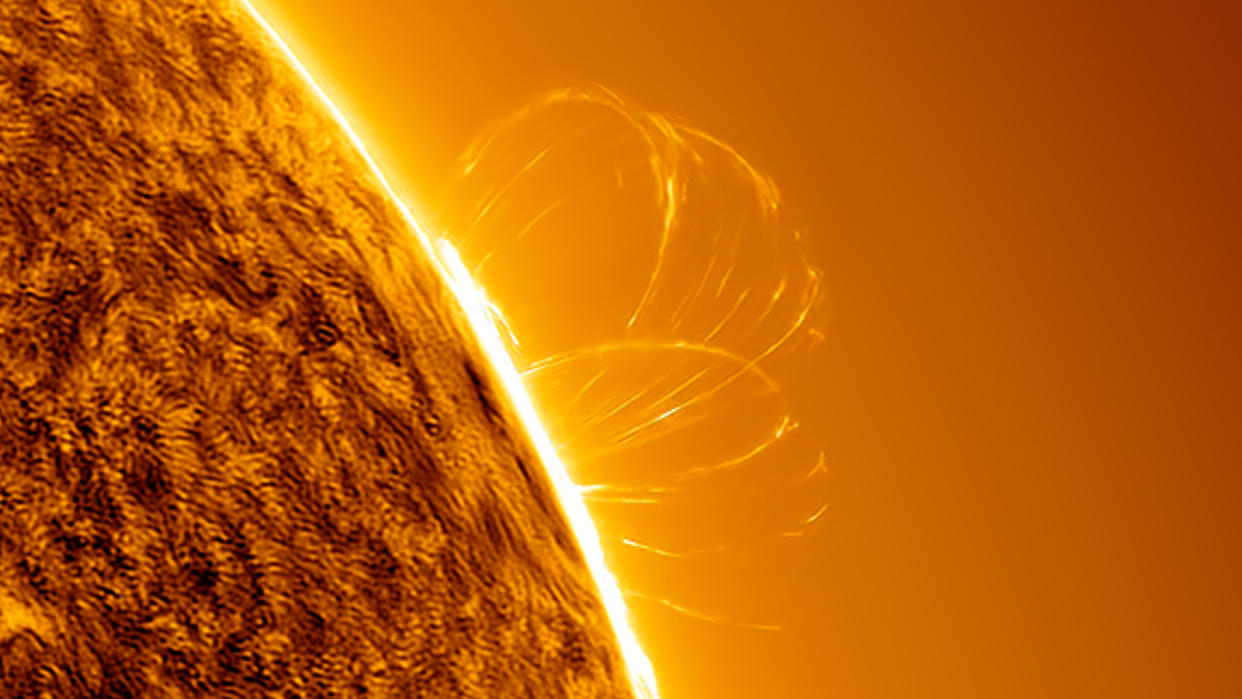Scientists discover the possible origin of the sun's magnetic field, and it's not where they thought it was

Scientists have found the possible origins of the sun's magnetic field, and it's not where they thought it was.
The discovery, made using complex computer simulations, suggests that the sun's magnetic field arises from instabilities in the plasma across the outermost layers of the solar surface, rather than from deep within the star as researchers previously thought.
If the findings are right, their discovery could give scientists a better chance of predicting solar flares and storms that can cause power outages, cripple the internet and even send satellites tumbling to Earth. The researchers revealed their findings in a study published May 22 in the journal Nature.
"I think this result may be controversial," co-author Keaton Burns, a research scientist at MIT, said in a statement. "Most of the community has been focused on finding dynamo action deep in the sun. Now we're showing there's a different mechanism that seems to be a better match to observations."
The sun is a gigantic ball of plasma whose charged ions swirl to create powerful magnetic fields. This region of roiling, flowing plasma, known as the "convection zone," comprises the top third of the sun's radius — stretching from the surface to roughly 124,000 miles (200,000 kilometers) beneath its surface.
Magnetic field lines cannot cross each other, so sometimes these fields knot into kinks before suddenly snapping — which in turn launches bursts of radiation called solar flares or enormous plumes of solar material called coronal mass ejections (CMEs) out into space. Once launched, CMEs travel at millions of miles per hour, sweeping up charged particles from the solar wind to form a giant, combined wavefront that, if pointed toward Earth, can trigger geomagnetic storms over our planet.
But researchers weren't sure exactly where most of the sun's magnetism originates from. Previously, scientists have tried to work it out using 3D computer simulations to map the flow of plasma, but these models tended to be too simple.
"Those simulations require millions of hours on national supercomputing facilities, but what they produce is still nowhere near as turbulent as the actual sun," Burns said.
For the new study, the researchers instead turned to data taken from a field known as helioseismology, which uses observations of vibrations rippling across the sun's outer surface to infer the structure inside.
RELATED STORIES
—Sun launches strongest solar flare of current cycle in monster X8.7-class eruption
— What if the Carrington Event, the largest solar storm ever recorded, happened today?
The researchers created their model using algorithms of these surface vibrations, and the results suggested that changes in the flow of plasma across the top 5% to 10% of the sun's surface most closely matched the magnetic fields seen from the outside. When they added possible effects produced by the sun's deeper layers to the simulation, the picture became muddier — no longer pairing with the sun's observed magnetic field.
"The features we see when looking at the sun, like the corona that many people saw during the recent solar eclipse, sunspots, and solar flares, are all associated with the sun's magnetic field," Burns said. "We show that isolated perturbations near the sun's surface, far from the deeper layers, can grow over time to potentially produce the magnetic structures we see."
By further developing their model, the researchers hope to better understand and eventually predict solar storms. Solar activity rises and falls in a roughly 11-year cycle, with intense solar flares and CMEs far more likely to occur during the peak period, known as solar maximum Scientists think we may already be entering the solar maximum of the current cycle, and that this period could be more intense than initially predicted
The increased activity has sent waves of high-energy plasma and X-ray bursts slamming into Earth's magnetic fields, downing Starlink satellites, triggering radio blackouts and causing auroras as far south as Pennsylvania, Iowa and Oregon.

